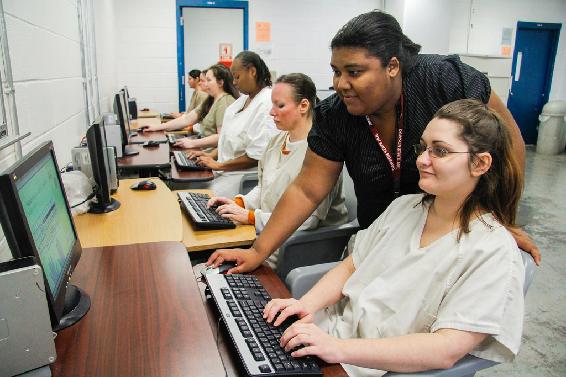7.6: Female Prisoners
- Page ID
- 16081
Incarcerated women pose is significant difference from incarcerated men. The primary concern is that often times, women are the prime caretaker for children. When they are incarcerated, who cares for the children left behind? This may mean the children must be cared for by the father or extended family members, but this is not always possible, and the children may end up in foster care. To compound this problem, there are fewer female prisons, so they are farther away from their children making visits difficult if not impossible. These issues can have significant impact on the growth and development for the children and women. It can also make the reunification problem difficult.
Another issue for female prisoners is they may be pregnant or have other significant medical issues during incarceration. What happens to the child upon delivery is a significant concern for incarcerated females. They may be unsure of long-term care for the newborn or how to cope with the separation immediately after birth. This can contribute to significant psychological issues for the female prisoner and could affect behavior and treatment.
More and more institutions are recognizing these concerns for female prisoners and started unique programs to address these issues. For example, the State of California has developed the Community Prisoner Mother Program:
The Community Prisoner Mother Program (CPMP) is a community substance abuse treatment program where non-serious, nonviolent female offenders may serve a sentence up to six years. The CPMP has been in existence since 1985 and is mandated by Penal Code (PC) Section 3410. Women are placed in the program from any of the female institutions. Pursuant to PC 3410, program eligibility requires that the female offender have up to two children less than six years of age, have no active felony holds, nor any prior escapes. The female offender must sign a voluntary placement agreement to enter the program, followed by three years of parole. The CPMP facilities are not the property of CDCR, and a private contractor provides program services at our Pomona facility. The treatment program addresses substance issues, emotional functioning, self-esteem, parenting skills, and employment skills.

Figure 7.3 Female Inmate Education Class. Photo by CoreCivic. Image is under a CC.By 2.0 license.
Basic Program Components of the CPMP
- Pregnant and/or parenting mothers and their children under six years of age are provided programs and support services to assist in developing the skills necessary to become a functioning, self-sufficient family that positively contributes to society.
- Individual Treatment Plans are developed for both the mother and child to foster development and personal growth. Program services focus on trauma-informed substance abuse prevention, parenting and educational skills.
- The program provides a safe, stable, and stimulating environment for both the mother and the child, utilizing the least restrictive alternative to incarceration consistent with the needs for public safety.
- Program goals facilitate the mother/child bond, reunite the family, enhance community reintegration, foster successful independent living, and enhance self-reliance and self-esteem. The resultant mission is to break the inter-generational chain of crime and social services dependency.
The primary focus of the CPMP is to reunite mothers with their child(ren) and re-integrate them back into society as productive citizens by (a) providing a safe, stable, wholesome and stimulating environment, (b) establishing stability in the parent-child relationship and providing the opportunity for in-mate mothers to bond with their children and strengthen the family unit. Specific goals are:
- To PROMOTE community reintegration, independent living and self-reliance;
- To REDUCE the use of alcohol and drugs, involvement in criminal behavior, the rate of recidivism, Factors which result in trauma to children of incarcerated parents and ultimately long-term costs to the state;
- To INCREASE parenting skills, emotional stability, and educational and vocational opportunities;
- To ADDRESS substance abuse issues, behavioral and psychological factors which impact emotional stability, self-esteem, self-reliance, parent-child relationship and appropriate child development;
- To PROVIDE pre-release planning, employment skills, educational, vocational and parenting skills. (CDCR Website)

